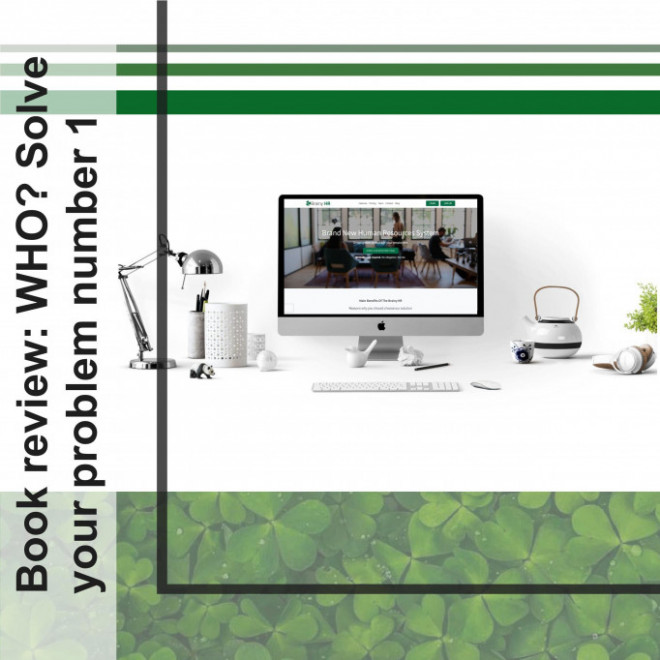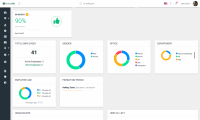Who! - this is the number one problem. Not that.
Common reasons for hiring a candidate. Managers incorrectly answer the question of who if:
- they are unclear about the duties of the employee in the declared position;
- lack of candidates;
- not sure of their ability to choose the right person;
- lose candidates whom they sincerely want to see in their team.
Recruiting. On the other side of the barricade - if hiring is so important, why are so many people mistaken in their choice?
Voodoo Reception:
|
1. A lover of beauty Based on instinct makes a harsh decision about a person |
2. Sponge Turns over the interview to everyone who is not lazy, takes time asking questions that are generally not related to work |
3. The Prosecutor They subject candidates to aggressive interrogation, throwing tricky tasks and logical puzzles to them (for example, “Why are the hatches round?”) |
4. A fan They sell the candidates a vacancy, and do not interview. They are more interested in the impression that they will make on the applicant than his professionalism. |
|
5. The magician Use tricks to test the candidate’s behavior (for example, throwing a piece of paper on the floor to track the candidate’s reaction) |
6. Animal lover They resort to inappropriate questions such as "What kind of animals do you represent yourself to be?" |
7. Hollow Neglect the interview itself, talk about everything and nothing |
8. Psychological questionnaire Lets psychological tests are up to you. According to GhSMART's experience, these tests are easily fake and not predictive. |
|
9. Suitability tester Suitability tests will not be decided for you. You can use tests as additional tools, but do not rely solely on them. |
10 . Fortune teller Ask questions about hypothetical situations (for example, “What would you do in this situation?”). You will probably get a great answer, but remember - Remember: actions are important, not words. |
And one more thing: all these shamanistic tricks come from the false belief that choosing a good employee is easy. It is almost impossible to see a person as he really is.
Who is player “A”
Player “A” is not just a superstar. Think of Player A as a talented person who can do the work you need and at the same time match the culture of your company. Hire people who have at least a 90% chance of success in the role you have identified.
How to find out who is right, four easy steps:
-
Goal sheet - describe the ideal candidate for the role, with the necessary competencies to fulfill your defined role.
-
Source - A systematic search for the necessary resumes before you have a new vacancy will help you reach Class A players when they need them.
-
Selection - Find potential candidates, at least 90% match.
-
Offer - close the deal (the right offer) with your ideal candidate.
Goal sheet. Success tracing paper
How to make a list of goals:
1. The main task
2. Expected Results
3. Professional qualities
4. Teamwork and communication skills
(example)
ROLE: Vice President of Sales
MISSION: Lead a team of five specialists who are collectively responsible for providing the client
| OUTCOMES | RATINGS / COMMENTS | |
| 01 |
1. Increase turnover from 25 million dollars to 50 mil- Lyons by the end of the third year (25% growth per annum). - Continuously increase the number of customers among domestic manufacturers. - To reduce the turnover from customers among foreign manufacturers from 75% of total sales by the end of the year. |
|
| 02 |
2. Raise EBITDA margin (profitability before logs) from 9 to 15% by the end of the third year. - Raise about 70% profit from sales growth (from 33 to 90%) for all customers by the end of the first year. |
|
| 03 |
Submit monthly forecasts are justified by 90%. |
|
| COMPETENCE | RATINGS / COMMENTS |
| Customer oriented | |
| Attentive to the details | |
| Creative \ innovative | |
| Hires Players “A” |
Source: create a pool of players
1. Recommendations from a professional network
2. Recommendations from the personal network
3. Invitation of the recruiter from
4. Invitation to the reserver
5. Inviting your company’s recruiter
At the end of each interview, ask the question: “Which of the most talented acquaintances could you name?” Do not stop filling up your list and do not stop meeting new candidates at least once a week.
Choice: Four Interviews for Hiring Professionals
The method is designed to:
+ Filter out bad candidates
+ Evaluate candidates in a way that is relevant to the scorecard and specifics - it provides all the data necessary to make an informed decision
+ Eliminate duplicate interviews from several people collecting the same data
+ Give candidates a positive experience that enhances your brand
1. Qualifying (preliminary) interview, 30–45 minutes
| Questions | What are you looking for |
|
1. What do you strive for in your career? |
Talented people know what they want, and are not afraid to tell you about it. And if their goals do not coincide with the work, they need to be weeded out. |
|
2. What is the best thing you do as a professional? |
Are candidate strengths consistent with the scorecard? No, they need to be weeded out. |
| 3. What is the worst thing you do as a professional? What aspects of the profession are you not interested in? | If they are not very good, try to get away from the answer or are not interested, weed them out. |
| 4. Name your five last bosses. When we turn to them, how will they evaluate you on a ten-point scale? |
This question will clarify your understanding that candidates are not very good. You are looking for 8, 9 and 10. Beware of 6 and below. Candidates putting themselves 6 do have 2. |
After the interview, ask yourself: do the strengths correspond to the goal list? Are there any weak ones? Am I excited to bring this man? Continue only if your answer to each of these questions is yes.
2. Qualification interview: a scheme for choosing who
|
EDUCATION: UNIVERSITIES, SCHOOLS, COURSES (10-15 minutes) |
|
| 1. What were your highest achievements? | 2. Have you had any obvious failures? |
|
WORK: PREVIOUS EXPERIENCE (20-30 minutes to work) |
|
|
1. What kind of work did you hire? |
2. What achievements are you most proud of? |
| 3. What were the flaws during this work? |
4. What can you say about those with whom you had to work? A. What was the name of your boss and how to spell his name? How did you work with him? What will he name among your positive and negative qualities? B. How did you divide your team into players A, B and C? What have you changed in their work? Did you hire someone? Did you fire someone? How would you divide the team into groups of players A, B and C at the time of your dismissal? |
| 5. Why did you quit your previous job? | |
| GOALS (10 minutes) | |
| 1. What are your career goals for the future? | |
3. Focus interview:
A targeted interview usually lasts from 45 to 60 minutes and follows a simple format.
1. The purpose of the interview is to talk about specialization (for example, programming)
2. What were the greatest achievements in these areas in your career?
3. What were the insights after the biggest mistakes and what lessons did you receive?
4. Checking the suitability of the cultural environment, interview with recommender
1. Under what circumstances did you have to work with this person?
2. What are his greatest strengths?
3. What qualities did he definitely need to work on at that time?
4. How would you rate his work in this position on a ten-point scale? What made you give such an assessment in his work?
5. This man admitted that he had to fight to cope with the work. Could you tell us more about this?
Decide who will be accepted
-
start by evaluating a skill — in other words, a combination of strengths and weaknesses that describe what a candidate can accomplish.
-
then evaluate, in particular, the combination of motives, behavior, and values that describe how a person acts.
-
use your assessment of the candidate’s will to evaluate the competency section of the goal sheet.
-
the player for the role is the one whose skill will offer a strong match with a score card.
How to get professionals
1. Determine which of the five “P” affects the candidate the most: attachment to company policy, feelings of family and friends, freedom granted, prosperity or pleasure.
2. Draw up an action plan for processing the problematic “P” on each of the five waves of the transaction: during the search for players, conducting interviews, between offers and consent, between consent and the first day, during the first 100 days.
3. Be persistent. Do not give up until the professional is on your team.


 Posted on May 25, 2020 by Anna
Posted on May 25, 2020 by Anna


